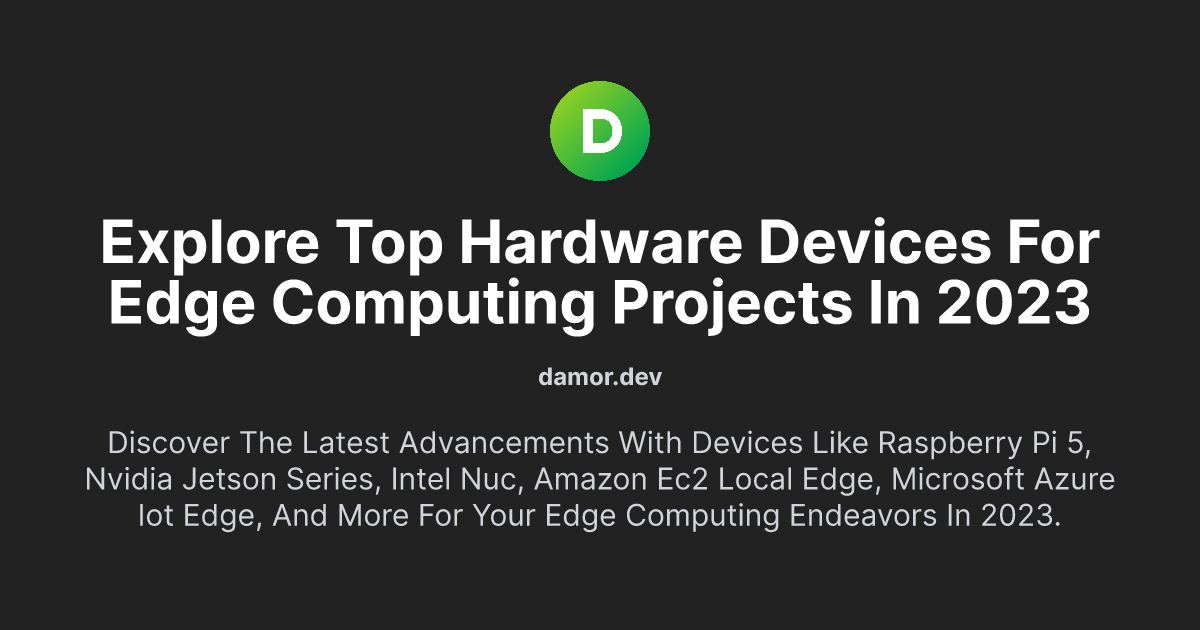Explore Top Hardware Devices for Edge Computing Projects in 2023

7 Hardware Devices for Edge Computing Projects in 2023
Looking for hardware devices for your edge computing project in 2023? Here are seven top picks that make processing closer to data sources a breeze:
1. Raspberry Pi 5:
- What's cool: Faster performance and upgraded capabilities.
- Perfect for: Video editing, gaming, and machine learning.
- Extra features: Gigabit Ethernet, Wi-Fi 5, USB 3.0 ports, and USB-C power delivery.
2. NVIDIA Jetson Nano:
- Great for: AI and deep learning applications.
- Why it stands out: High-performance graphics and computing with a compact design.
- Bonus: Comprehensive software ecosystem for seamless AI application development.
3. Google Coral Edge TPU:
- For accelerating AI at the edge: Specialized hardware for TensorFlow Lite models.
- Performance: Up to 4 TOPS with low power consumption (0.5W per TOPS).
- Forms available: USB stick and PCI-e card.
4. Microsoft Azure IoT Edge:
- What it does: Extends Azure services to edge devices for reduced latency and improved efficiency.
- Key features: Container orchestration, Docker, and centralized management via Azure IoT Hub.
- Applications: Smart cities, healthcare, retail, and more.
5. Intel NUCs (Next Unit of Computing):
- Ideal for: Real-time video analytics, machine learning inference, and industrial automation.
- Why choose: Compact form factor (4×4 inches), high-performance Intel Core processors, and Iris Xe graphics.
- Applications: Smart cities, retail, industrial automation, healthcare, and education.
6. Amazon EC2 Local Edge:
- For AWS Lambda functions and containerized applications: Offers flexibility and control.
- Addressing latency: Runs applications locally for faster response times.
- Key features: AWS Fargate, EC2 Local Volume, and centralized management via AWS OpsHub.
7. Dell EMC PowerEdge XE240m:
- Built for: Demanding edge computing applications in harsh environments.
- Why it's powerful: Dual-socket Intel Xeon processors for real-time data processing.
- Additional perks: Scalable storage options, compatibility with various operating systems, and advanced security features.
These hardware choices cater to a range of applications, from gaming and robotics to industrial IoT and healthcare, making edge computing more accessible and efficient.


![[Solved] ZlibError:zlib:
unexpected end of file - payload](/content/images/size/w600/2024/02/Screenshot-2024-02-18-143905.png)


